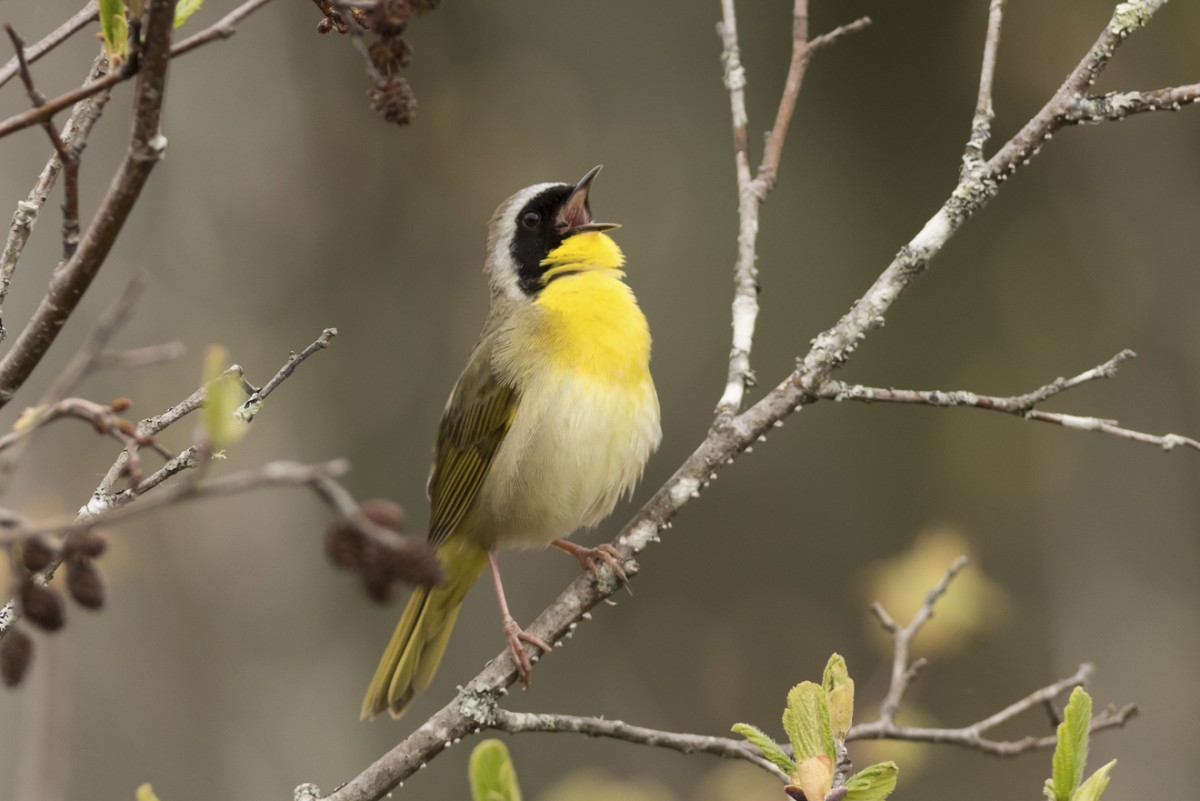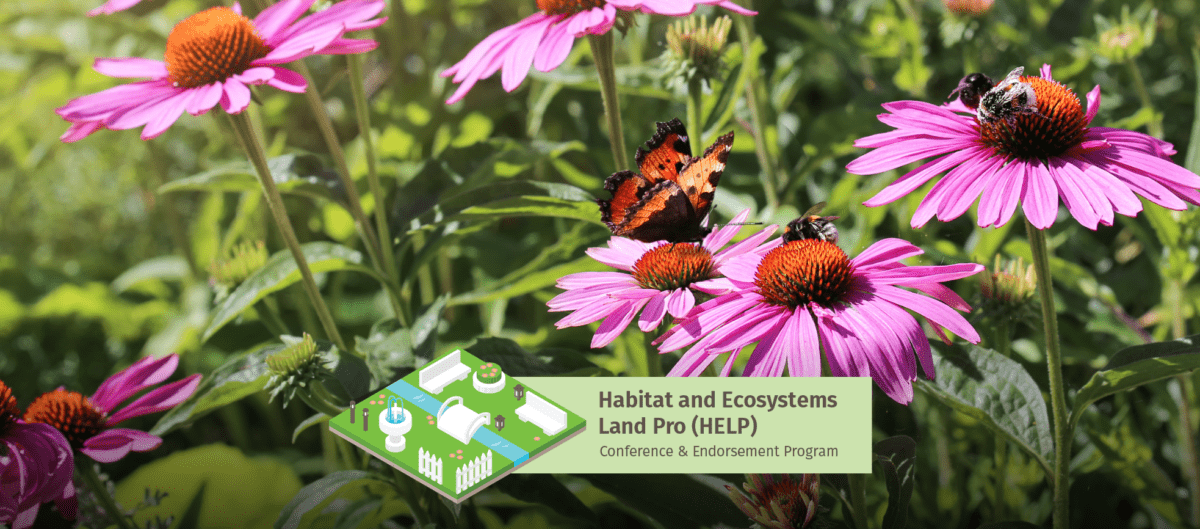November 2010
Gas Drilling Update —
The final Environmental Impact Statement that will guide New York State in its efforts to permit and regulate horizontal gas drilling is anticipated to be released at any time. The EIS follows a public participation process, and intense and ongoing public debate over the appropriateness and safety of drilling and related activities.
Environmentalists and many other New Yorkers were deeply disappointed in the draft version of the EIS put forth last year. An outpouring of support for strengthening the document, or starting over, was directed at the NYS Department of Environmental Conservation, the agency preparing the impact statement. What DEC’s response will be remains to be seen.
In other arenas, the US Environmental Protection Agency is conducting a study on the threats to drinking water from gas drilling. Public hearings last month drew large crowds to several locations, including Binghamton, and again the prevailing opinions were against drilling.
There has been a call for NY to hold off on releasing its EIS until the EPA study is complete. Legislation placing a moratorium on drilling passed the NY State Senate, but has not been taken up by the Assembly.
Another concern is that DEC will not have sufficient resources and personnel to enforce whatever regulations it ultimately puts in place. Recent reports say that the agency’s already shorthanded staff will be cut even further due to budget constraints.
What you can do —
Our region is near the heart of the targeted gas drilling area. It’s important that we as citizens and environmentalists be heard on this issue. Contact your state legislators and urge that drilling not be allowed until all the facts are in and adequate safeguards are in place. Tell them that state oversight is crucial to protecting our lands and waters and that DEC needs the capacity to do its job. Local town and county representatives should also hear that they need to speak out and take action to protect local residents and the environment.
Environmental Advocates – A Group Worth Supporting —
Perhaps the best of the statewide environmental organizations is Albany-based Environmental Advocates – a group that works to “monitor state government, evaluate proposed laws, and champion policies and practices that will ensure the responsible stewardship of our shared environment.”
Now in its fourth decade, EA’s history somewhat parallels DOAS’s. One of our early leaders, Dr. John New, was a founder of the then Environmental Planning Lobby, a coalition of groups that focused on state government to bring about environmental protections. EA has been involved in nearly every major state environmental issue, from the Bottle Bill to controlling acid rain, to the State Environmental Quality Review Act, to the Clean Indoor Air Act, and most recently natural gas drilling. They publish an annual Voter’s Guide that provides the records of legislators and other public officials on environmental issues.
DOAS is a long-time member and supporter of Environmental Advocates, and the organization is an invaluable source of information on the conservation issues that are addressed in this column.
What you can do —
Please consider joining and supporting Environmental Advocates. Their web site, www.eany.org, provides information on how you can assist their campaigns.
Elections 2010 —
New Yorkers will go to the polls November 2 to choose a new governor and attorney general, along with both US Senators and all members of the House of Representatives. All NY State Assembly and Senate seats are also on the ballot. As is too often the case, the environment is not in the forefront of issues, either among the candidates, nor the media covering them. This is particularly true in the present economic downturn.
However, informed voters should consider the candidates’ records and statements on conservation issues. Here are a few items from candidates’ websites for some of the races, based on candidates’ actual records.
Governor
- Republican Carl Paladino – “Carl Paladino is in favor of drilling the Marcellus Shale deposit for its energy resources.”
- Democrat Andrew Cuomo – “Making sure health and environmental risks are comprehensively studied before natural gas exploration in New York’s Marcellus Shale formation occurs.”
Attorney General
- Democrat Eric Schneiderman – “He will litigate to block the use of unsafe and unproven technologies like hydrofracking to protect against dangerous drilling accidents.”
- Republican Dan Donovan – No environmental issues addressed on web site.
US Senate
- Republican Joe DioGuardi – “While development is important for economic growth, I believe it must be balanced with the preservation of the natural assets that surround us.”
- Democrat Kirsten Gillibrand – “Kirsten supports aggressive action aimed at reducing carbon emissions by 80 percent by the year 2050.”
- Democrat Charles Schumer – “His efforts to protect wildlife include successfully fighting back changes to weaken the Endangered Species Act, and increasing funding for wildlife refuges and international conservation programs.”
- Republican Jay Townsend – “We can and should increase domestic supplies of energy by making more federal land available for oil exploration.”
US House of Representatives
- Republican Richard Hanna – No environmental issues addressed on web site.
- Democrat Michael Arcuri – “… he stands adamantly against the natural gas drilling process known as hydrofracking until there is adequate proof that the process of drilling will not contaminate water sources and that removal of waste products can be done safely.”
What you can do —
Make an effort to learn the candidates’ stances on local, state and national environmental issues. Their websites are not objective sources of information, so check the League of Conservation Voters and the NY Environmental Planning Lobby voters’ guide for rankings.
State Legislative Session Over – Or Is It? —
This year’s marathon session in the NY State Legislature came to an end on Aug. 3, with passage of a near-record late state budget that contained deep cuts for state environmental agencies and programs.
Worst hit was the Environmental Protection Fund, which supports everything from recycling to waterfront revitalization and land conservation. The EPF, already short from cuts in previous years, was slashed over 30 percent.
As for legislation, it was a mixed bag this year. Among good bills that fell short: a proposal for a 5 cent fee on plastic shopping bags, protection for small wetlands, and efficiency rules for new or replacement outdoor lighting by public agencies. Also left hanging were several bills related to regulation of the use and storage of hydro-fracking fluids and waste.
On the plus side was passage of a requirement on electronics manufacturers to collect and recycle or reuse their products at the end of the useful lives of these items. Another measure will ban rechargeable batteries from NY’s solid waste stream. Also passed was a law mandating use of ultra-low sulfur home heating oil, starting in 2012. The Child Safe Playing Fields Act, that will keep pesticides off school and day care center playing fields and playgrounds, was signed by Governor Patterson.
There is hope that the Assembly will reconvene to take up the moratorium on horizontal drilling passed by the Senate.
What you can do —
You can check on how your state reps voted on these and other measures at the Senate and Assembly web sites. Let your legislators know your sentiments on their actions on these bills. Also, contact Gov. Patterson and urge him to sign the gas drilling moratorium bill if it reaches his desk.
Good News for Wolves—Tentatively —
We have written here about the Obama administration turning over wolf management to the western states, where the goal is to kill as many wolves as possible.
However, the tide may have turned. In August, a federal judge restored protection for wolves in the northern Rockies. The court ruled that the US Fish & Wildlife Service (USFWS) violated the Endangered Species Act by allowing different degrees of protection in different states. Wolves in Montana, Wyoming, Idaho, Oregon, Washington and Utah will have their protections restored. In addition, wolf hunts in Montana and Idaho will be canceled.
The court’s ruling strengthens the capacity of the ESA to conserve wildlife near extinction. USFWS should use the best available science when it moves forward with future wolf delisting.
As might be expected, anti-wolf forces are already trying to strip ESA protections from wolves. They are pushing legislation in Congress to remove wolves from the ESA.
What you can do —
Let your federal representatives and President Obama know that wolves are an iconic part of our wild heritage, and should not be persecuted. Point out that the ESA is well-supported by Americans, and should be science — not politics — based.
Offshore Oil Drilling – Recipe for Disaster Come True —
The ongoing horror of millions of gallons of crude oil pouring from an undersea well into the Gulf of Mexico has drawn the nation’s attention. That it should take a debacle such as this to get regulators and politicians to understand the dangers of this activity is a sad commentary on our society and government.
At the end of March, the Obama administration made a splash of its plans to open vast expanses of water along the Atlantic coastline, the eastern Gulf of Mexico and the coast of Alaska to oil and natural gas drilling, much of it for the first time. Conservationists had kept expanded offshore drilling at bay through the anti-environment administrations of Ronald Reagan and George W. Bush, but were let down by a president who campaigned on reducing America’s addiction to fossil fuels.
Since the Gulf oil spill, there has been some withdrawal by the supporters of increased drilling— what else could they do, facing a spill that may yet earn the dubious title of the worst ever? However, the recently introduced American Power Act still encourages offshore drilling by promising revenues to states that allow it. President Obama praised this bill nine days after he toured the Louisiana coastal area affected by the oil spill!
The President has made a political calculation that Americans will support expanded drilling, despite the disaster in the Gulf. This is a cynical approach that says business as usual will continue, even as the failed well continues to pump heavy crude into our coastal waters. A truly courageous leader would just say no to offshore drilling, and strongly move the nation towards efficiency and renewable energy.
What you can do —
Contact President Obama and let him know that he is minimizing the lessons of the Gulf oil spill by continuing to push for expanded offshore drilling. This blind rush to open up the Atlantic and Alaska for more drilling belies his supposed support for renewable energy.
Also, let our US Senators Kirsten Gillibrand and Charles Schumer know that the American Power Act is unacceptable without a ban on offshore drilling. If politicians cannot now recognize the dangers and devastation this energy source brings, they are intentionally looking away, and avoiding responsibility to the environmental and public health.
Gas Drilling – Protection Needed —
The NY State Department of Environmental Conservation has not yet released a final version of its updated environmental impact statement (EIS) for natural gas drilling in the state. This document should identify the effects the new and expanded horizontal hydrofracturing drilling will have on the environment, and what mitigating measures the state will require.
Judging from the regulations envisioned in last year’s draft version of the EIS, it is unlikely DEC will enact the needed protections. In its position statement, DOAS identifies a number of concerns from gas drilling, including:
- Potential ground and surface water contamination from the many toxic chemicals used in hydrofracking the gasbearing shale
- Storage and disposal of above ground production fluids, such as in open lagoons, or into nearby streams, or trucked to an unprepared wastewater treatment plant
- Impacts to wildlife and their habitats, including highvolume water withdrawals
- Damage to roads and other surface features such as forests, agricultural area and waterways
- Noise and air pollution
- Immediate and adequate response to any accidents or spills
- Cumulative social impacts of pipelines and wells (scenic beauty, rural character, tourism, taxes, property values, sports, agriculture).
The DOAS statement calls for a ban on drilling, saying, “Even with the most stringent controls and oversight, this activity is an unacceptable danger to our planet, with no environmental benefits.”
Anticipating a weak DEC response to the dangers of drilling, NY State Assembly Conservation Committee Chair Robert Sweeney has introduced several bills to address some of the most severe threats from drilling:
- A10088 would prohibit on-site storage of drilling flowback fluids in open pits, requiring they be contained in steel tanks. These open pits pose a particular hazard to waterbirds and other wildlife that may be attracted to them.
- A10091 would require disclosure of all substances used in hydrofracking fluids, and ban the use of substances that pose a threat to human health.
- A10092 would require an environmental impact statement for any gas well that uses hydrofracking fluids.
In addition, the federal Environmental Protection Agency has undertaken a study of the risks of hydrofracking, particularly on drinking water. This effort is anticipated to take until 2012 to complete, and many organizations and environmentalists are calling on the state to hold off finalizing its regulations until the study is done.
What you can do —
Assemblyman Sweeney’s bills are worthy of our support, and would override DEC’s regulations. In particular, storage of hydrofracking fluids in open pits is a threat that DEC does not take seriously.
Contact your state Assemblymembers and Senators and ask them to support legislation to protect our environment from hydrofracking.
Contact DEC Commissioner Pete Grannis (NY State Department of Environmental Conservation, 625 Broadway, Albany, NY 12233) and Gov. David Patterson and urge that DEC wait until the EPA study is completed and reviewed, before finalizing the drilling regulations.
Wolves Still Under Attack Out West —
The ramifications continue to evolve from the Obama administration’s decision to continue the delisting of the gray wolf from the Endangered Species Act in the northern Rockies. This action turned wolf protection over to the states, but has resulted in just the opposite.
Gray wolves came back from near extinction in the Rockies as a result of a decades-long political and legal battle that stirred conservationists across the nation and around the world. This victory still stands as one of the great success stories in wildlife recovery and protection.
However, the Bush and now the Obama administration gave into pressure from ranchers and hunters and declared wolf populations as secure, even though they remain a fraction of their original number.
The states of Idaho and Montana immediately announced their intention to kill wolves that stray from Yellowstone National Park. Idaho Governor C.L. Butch Otter–who has argued to kill up to 80% of the wolves in his state–publicly stated his desire to be one of the first to kill a wolf.
Since the Obama decision, these actions have occurred:
- Over 230 wolves have been killed in Idaho and Montana, including an entire pack shot from a helicopter in Idaho. Montana recently extended its hunt until the end of March, to allow the shooting of pregnant females.
- A bill has been passed in one house of the Utah legislature to allow killing any wolf that enters the state. According to the proposed law’s sponsor, “This bill simply says any wolf within Utah will be captured and killed. We don’t want any of them here.”
- “Wildlife Derbies” have been held in Idaho, with the goal of killing as many wolves and other wildlife as possible. These events have been sponsored by Cabela’s and Sportsman’s Warehouse, major outdoor retailers, with the proceeds going to anti-wolf organizations.
In other arenas, the state of Alaska continues its all-out assault on wolves, including a recent action to use spotter planes and helicopters to track and kill 200 wolves. This is in addition to trapping wolves just outside Denali National Park, where wolf numbers are already down to around 70 individuals – the lowest count since surveys began in the 1980s.
In February, the US Fish & Wildlife Service announced that the population of the southwest’s “lobo”, or Mexican wolf had dropped 20% in 2009, to a total of 42 individuals. Clearly these animals are teetering on the brink of extinction.
What you can do —
Contact President Obama and Interior Secretary Ken Salazar (Department of the Interior, 1849 C Street N.W., Washington DC 20240) and urge them to restore full federal protection to gray wolves, and not allow the states to undo the hard work and success of many conservationists in saving the species. Send copies to your federal representatives and ask them to sponsor legislation to end aerial gunning of wolves.
Let Cabela’s (Thomas L. Millner, President and CEO, Cabela’s Inc., 1 Cabela Dr., Sidney, NE 69160), and Sportsman’s Warehouse (Stuart B Utgaard, CEO, Sportsman’s Warehouse, Inc., 7035 High Tech Dr., Midvale, UT 84047) know that you disapprove of their participation in the wildlife derbies.
Endangered Species Act Changes in the Works —
The Obama administration has indicated its intention to propose changes to the Endangered Species Act (ESA) this year. For over 35 years, the ESA has been a safety net for our nation’s wildlife, fish, and plants on the brink of extinction. It is critical to keep this law strong so that it can continue to protect wildlife and wild places.
Improvements to the ESA are certainly in order. The long backlog of species awaiting action has existed for decades now, and some species have actually disappeared while caught in the regulatory quagmire.
The US Fish & Wildlife Service is seeking public comment on what changes are needed to the act. This provides an opportunity for conservationists to express their views on the importance of the law, and how to strengthen it, but it also gives industries that would like to see the ESA disappear the same opportunity.
At least one group whose board members represent the National Mining Association and the American Forest & Paper Association, among others, is already pressuring the Obama administration. Other extractive industries and development interests can be expected to push for reducing the role of science, and increasing the weight given to economics in Endangered Species Act decisions. This would represent a return to the misguided policies of the George W. Bush years.
It is important that we let the administration and Congress know of the broad support Americans have for the ESA, and the success stories it has brought about in preventing extinction of species such as the Bald Eagle and Peregrine Falcon.
At the same time, the lack of funding for recovery plans, and continuing political involvement in listing decisions must be emphasized.
What you can do —
Contact US Fish and Wildlife Service Director Sam Hamilton and urge that endangered species protections be strengthened by:
- Overturning Bush-era policies and regulations that greatly undermine endangered species protection and recovery;
- Protecting species throughout their entire ranges;
- Extending the Act’s safety net to all species in need;
- Strengthening habitat protections;
- Addressing global warming impacts on endangered species and their habitat;
- Increasing funding for endangered species programs.
Insist that the administration oppose any regulations that weaken endangered species protections. In particular, ask that federal agencies thoroughly consult with the U.S. Fish and Wildlife Service when their actions may increase the climate change impacts on endangered species.
For the maximum impact, send copies of your letter to President Barack Obama, Interior Secretary Ken Salazar, and your Congressional representatives and US Senators.
Addresses: Director Sam D. Hamilton, U.S. Fish and Wildlife Service, 1849 C Street NW, Washington, DC 20240, and Secretary Ken Salazar, Department of the Interior, 1849 C Street NW, Washington, DC 20240.
Wetlands Protection Still Lacking in New York —
One of the least publicized, but worst anti-environmental actions in recent years was the 2006 US Supreme Court decision determining that the Clean Water Act did not apply to small, isolated wetlands not directly connected to larger waterways. This came about as a result of a lawsuit by the City of Chicago regarding permits required for construction.
This decision affected wetland protection nationwide. In NY State, the practical effect was to leave wetlands under 12.4 acres completely open to filling or draining, without any oversight. The 12.4 acre (10 hectare) threshold is part of NY’s freshwater wetland law. Areas smaller than this were in federal jurisdiction that now does not exist.
The conservation values of these small wetlands are significant. In addition to providing essential wildlife habitat, they reduce the extremes of flood and drought, by serving as natural sponges to retain and release waters. They also cleanse water by filtering and sequestering pollutants. Although the individual areas are not impressive, in sum, they make up a significant portion of the nation’s remaining wetlands.
This gaping loophole is recognized by conservation groups, and legislation has been drafted to give NY State authority to regulate these important areas. These bills have passed the State Assembly for several sessions, by significant majorities. However, they have never reached the floor of the State Senate for a vote. The longer this situation continues, the more wetlands will disappear in the state.
What you can do —
Contact your state legislators and Governor Paterson, and let them know NY must step up and protect these critical wetland areas. The policy of the state is that wetlands are an important and irreplaceable resource. We need the legislature to take action this year.
Year-End Review —
This is the season for looking back on the past 12 months, so let’s see how the environment fared in 2009.
Federal — President Barack Obama took office in January amidst great hopes from the conservation community for a new approach to the environment. Obama had focused on energy issues and climate change during the campaign, but he did not have a long environmental resume.
After nearly a year, the best that can be said is that the record of his administration is mixed. As we know, Washington has been preoccupied with a depressed economy and battles over health care legislation, so perhaps the President has not yet been able to devote significant attention to the environment. He shortly will be attending the Copenhagen summit on climate change and has signaled his intention to commit to relatively strong limits on greenhouse gas emissions. If these are real measures, it will be a significant change from the Bush administration’s rhetoric on the issue.
The President’s choice to head the Interior Department, Ken Salazar, has been a disappointment. One of his first actions was approving the transfer of wolf management to several western states that immediately began an all-out assault on this still at-risk species. Most recently Idaho announced plans to kill 220 wolves this hunting season alone. Salazar has ignored broad public support for wolf protection.
On the plus side, the Obama administration has moved to reenact the Roadless Rule that protects undisturbed areas in the national forests. This hard-fought rule had been unraveled during the Bush years.
Congress has moved ahead positive legislation on limiting greenhouse gases, and shifting the nation toward renewable energy. This summer the House passed a cap-and-trade global warming reduction plan to reduce economy-wide greenhouse gas emissions 17 percent by 2020. This legislation also included renewable requirements for utilities, and incentives for energy efficiency in homes and buildings. The Senate has yet to act on energy legislation, and likely will not do so until 2010.
NY State — As with a new administration in Washington, hopes were high in Albany, as Democratic majorities controlled both houses of the state legislature for the first time in decades. Many beneficial environmental measures had been stalled in the Republican Senate, and environmentalists looked forward to breaking this long logjam.
However, politics reared its ugly head, and the closely-divided Senate devolved into a chamber of legislators switching teams for personal gain, with parliamentary maneuvering and legal action resulting in a stalemate for most of the 2009 session.
One bright spot to come out of this mess was passage of the Bigger, Better Bottle Bill that added water bottles to the state’s container deposit law. Although delayed for several months by court challenges, the measure is now in place, and will reduce litter and promote recycling in the state.
Also passed by the legislature and signed into law by Gov. David Paterson was the Green Jobs/Green New York Act described in last month’s column. The bill creates jobs that will reduce energy use and costs for citizens and small businesses. It also includes revolving loans and green jobs training programs for weatherization projects.
Still in limbo in Albany are bills to protect smaller wetlands, to deal with growing e-waste, and to require cleaner diesel fuel.
Local — Although technically a state matter, the action by the NY State Department of Environmental Conservation to ban open burning of trash statewide had its genesis and much of the effort to bring it about right here in Otsego County and surrounding areas. Banning burn barrels has long been a struggle for local environmentalists, and activists such as Martha Clarvoe, Michael Whaling, Mary Ashwood and others kept this public health danger in front of decision makers. Local and state legislators ignored the toxins rural residents were exposed to, and DEC is to be commended for finally taking action.
Also on the local scene, plans to explore and produce natural gas from hydro-fractured wells is proceeding. The consensus of environmental groups, including DOAS, is that this activity cannot be carried out safely, even with strict oversight—which is unlikely under the state’s planned regulations.
What does 2010 hold? — With economic recovery a large question mark, and other matters such as health care and continuing military actions dominating government, it is difficult to predict.
There is momentum for action on climate change and energy in Washington, but how that will translate into legislation remains to be seen.
If the state legislature can resume some sort of normal function, it may make some progress on environmental issues, but the deep state financial deficit could override everything else.
Thank you for your efforts for our natural world over the past year — we all look for a brighter future!








